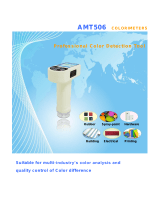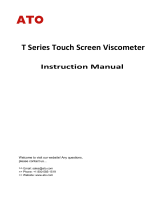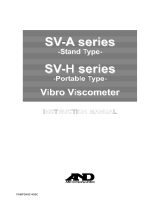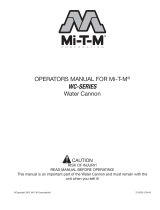
iii
CANNON
®
miniPV-X Automatic Viscometer with VISCPRO
®
Instruction & Operation Manual
Version 1.0a— January, 2011; CANNON
®
Instrument Company
2139 High Tech Road • State College, PA 16803 • USA
Testing samples—software options ...................................................................................... 64
Entering sample ID information ................................................................................ 64
Selecting sample actions .......................................................................................... 64
Viscosity Action for viscosity standards ................................................................... 66
Copy & Paste Sample ID data entry options ........................................................... 67
Inserting/deleting a sample ID in the test sequence ................................................... 67
Saving Sample ID information ................................................................................. 68
miniPV-X analysis modules ..................................................................................... 68
Configuring the VI Matcher ................................................................................................. 69
Turning off the VI Matcher ...................................................................................... 72
Handling errors ................................................................................................................... 71
5
OPERATING, MAINTAINING
AND SERVICING THE miniPV-X 73
miniPV-X components ........................................................................................................ 73
Bath Unit ................................................................................................................ 73
Solvent Dispensing System ...................................................................................... 74
Maintaining the solvent system ............................................................................................. 74
Filling the solvent container(s) .................................................................................. 75
Emptying the Waste Receiver .................................................................................. 75
Dual-solvent washing .............................................................................................. 76
Viscometer tubes ................................................................................................................ 76
Thermistor operation ............................................................................................... 76
Timing bulb determination ........................................................................................ 76
Carousel Adjustments ......................................................................................................... 77
Homing the Carousel .............................................................................................. 77
Adjusting sample tray height .................................................................................... 77
Adjusting sample tray force ..................................................................................... 77
Temperature bath ................................................................................................................ 79
Filling the bath ........................................................................................................ 79
Draining the bath ..................................................................................................... 80
Bath heaters ........................................................................................................... 80
Bath fluid safety features ......................................................................................... 80
Checking solvent levels ........................................................................................... 80
Solvent/drain lines ................................................................................................... 80
Ventilation........................................................................................................................... 81
Checking bath temperature ................................................................................................. 81
Dual-solvent washing .......................................................................................................... 81
Solvent wash by computer .................................................................................................. 81
Setting wash parameters ......................................................................................... 82
Preventive maintenance ....................................................................................................... 82
miniPV-X repair/replacement components ........................................................................... 83
6

























